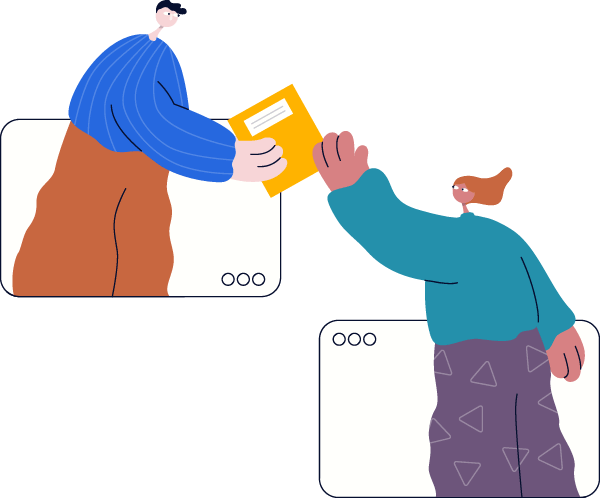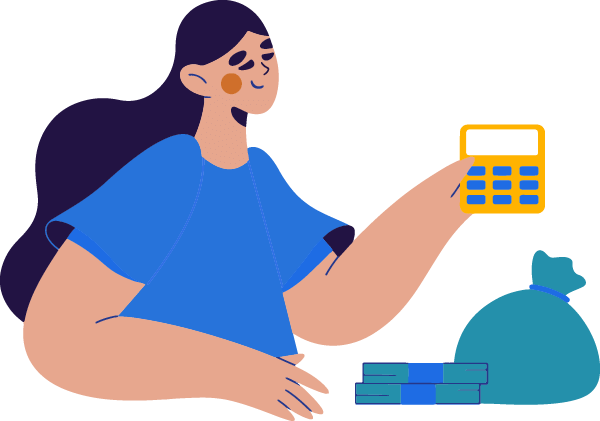Izzard Ink can maintain the integrity of your printed edition in your electronic book while giving readers the flexibility they want and need.


Publishing an ebook involves several key steps, from writing the manuscript to making it available for sale on digital platforms. Here’s a general guide to get you started:
Publishing an eBook with Izzard Ink offers a comprehensive, personalized, and professional service compared to generic eBook publishing paths. With Izzard Ink, authors receive high-level support, expertise, and a quality-focused publishing process. This makes it an attractive option for writers committed to their craft and invested in their book’s success.
Platform Details:


The cost to publish an eBook can vary widely depending on the level of professional services used. At Izzard Ink, eBook publishing costs are included in the Get Ink’d Publishing Package at no extra charge. Here’s a breakdown of potential costs:
Total Estimated Costs:
Low-End (Minimal Professional Services): $0 to $500
Mid-Range (Some Professional Services): $1,000 to $15,000
High-End (Full Professional Services): $15,000 or more

No matter where you are on your publishing journey, we’re here to support and guide you toward success.
An eBook is a digital version of a book that can be read on computers, e-readers, and mobile devices. It offers features like adjustable text sizes and interactive links, making it a convenient and portable reading option.
Whether it’s better to self-publish or get a publisher depends on your goals, resources, and the level of control you want over the publishing process:
Self-Publishing Advantages:
Self-Publishing Disadvantages:
Traditional Publishing Advantages:
Traditional Publishing Disadvantages:
Conclusion:
Upon saving your eBook in a digital format, it automatically receives copyright protection, granting you exclusive rights. However, for enhanced protection, registering the copyright with a government body like the U.S. Copyright Office is advisable.
Registration provides legal evidence of your copyright, essential for infringement lawsuits, and offers eligibility for statutory damages and attorney’s fees. Though not mandatory, this step significantly strengthens your ability to enforce your rights and safeguard your work against unauthorized use.
Authors’ earnings from books versus eBooks vary depending on the publishing route, royalty rates, and sales volumes. In traditional publishing, physical book royalties typically range from 7% to 15% of the list price, whereas eBook royalties hover around 25%. Self-publishing offers even higher royalties, ranging from 30% to 60% for physical books and 35% to 70% for eBooks, depending on the platform and pricing strategy.
eBooks often yield higher profit margins due to lower production costs and the potential for higher sales volumes at lower prices. However, total revenue also depends on pricing strategies and market reach. For self-published authors, eBooks often present a more lucrative option due to better royalties and lower expenses. Still, success depends on effective sales strategies and audience preferences.
A balanced approach that offers both formats can help authors maximize earnings by catering to different reader preferences and expanding their audience reach.
The genre of eBook that sells the most can vary significantly depending on market trends, reader demographics, and platforms. However, some genres consistently perform well in terms of sales across major eBook platforms like Amazon Kindle, Barnes & Noble, and Apple Books. These top-selling genres often include:
Yes, eBooks are cheaper to publish than physical books due to lower production and distribution costs. Without the need for paper, ink, or physical printing, eBooks save on material and manufacturing expenses.
Additionally, they eliminate the costs associated with shipping, handling, and storing physical inventory. Digital distribution allows for a global reach without the logistical and financial challenges of transporting physical books.
While both eBooks and physical books may require investment in professional editing, cover design, and formatting, the absence of physical production and distribution costs makes eBooks significantly more cost-effective.
This affordability and ease of distribution make eBooks particularly appealing for independent authors and small publishers aiming to minimize upfront expenses and maximize accessibility to readers worldwide.
| Marketing Channel | Reach | Engagement Rate | Cost-Effectiveness | Suitability for Ebook Genre | Required Effort | Typical ROI |
| Social Media | High | Medium to High | High | All genres | Medium to High | High |
| Email Marketing | Medium | High | Medium to High | All genres, especially for established audiences | Medium | High |
| Content Marketing | Medium to High | High | Medium | All genres, especially non-fiction and educational | High | Medium to High |
| Paid Advertising | High | Low to Medium | Low to Medium | All genres, especially new releases | Low to Medium | Variable |
| Influencer Collaborations | High | High | Low to High | Particularly effective for niche genres | Medium to High | High |
Reach
High
Engagement Rate
Medium to High
Cost-Effectiveness
High
Suitability for Ebook Genre
All genres
Required Effort
Medium to High
Typical ROI
High
Reach
Medium
Engagement Rate
High
Cost-Effectiveness
Medium to High
Suitability for Ebook Genre
All genres, especially for established audiences
Required Effort
Medium
Typical ROI
High
Reach
Medium to High
Engagement Rate
High
Cost-Effectiveness
Medium
Suitability for Ebook Genre
All genres, especially non-fiction and educational
Required Effort
High
Typical ROI
Medium to High
Reach
High
Engagement Rate
Low to Medium
Cost-Effectiveness
Low to Medium
Suitability for Ebook Genre
All genres, especially new releases
Required Effort
Low to Medium
Typical ROI
Variable
Reach
High
Engagement Rate
High
Cost-Effectiveness
Low to High
Suitability for Ebook Genre
Particularly effective for niche genres
Required Effort
Medium to High
Typical ROI
High
Channel Details:
| Pricing Strategy | Pros | Cons | Suitable Genres | Impact on Sales Volume | Impact on Revenue |
| Premium Pricing | Can signal higher quality | May deter price-sensitive readers | Niche, non-fiction, high-value content | Lower | Higher |
| Penetration Pricing | Attracts readers quickly | Lower margins per book | Most genres, especially competitive ones | Higher | Lower initially, potential for higher long-term |
| Freemium | Builds an audience; low barrier to entry | Earnings depend on upselling | Series, educational content, apps | Higher | Varies widely |
| Dynamic Pricing | Maximizes revenue through market demand | Requires constant monitoring and adjustment | All, particularly those with fluctuating popularity | Varies | Higher |
| Free | Maximum accessibility; builds readership | No direct earnings from the book | Promotional, first in a series, lead generation | Highest | None directly, potential indirect earnings |
Pros
Can signal higher quality
Cons
May deter price-sensitive readers
Suitable Genres
Niche, non-fiction, high-value content
Impact on Sales Volume
Lower
Impact on Revenue
Higher
Pros
Attracts readers quickly
Cons
Lower margins per book
Suitable Genres
Most genres, especially competitive ones
Impact on Sales Volume
Higher
Impact on Revenue
Lower initially, potential for higher long-term
Pros
Builds an audience; low barrier to entry
Cons
Earnings depend on upselling
Suitable Genres
Series, educational content, apps
Impact on Sales Volume
Higher
Impact on Revenue
Varies widely
Pros
Maximizes revenue through market demand
Cons
Requires constant monitoring and adjustment
Suitable Genres
All, particularly those with fluctuating popularity
Impact on Sales Volume
Varies
Impact on Revenue
Higher
Pros
Maximum accessibility; builds readership
Cons
No direct earnings from the book
Suitable Genres
Promotional, first in a series, lead generation
Impact on Sales Volume
Highest
Impact on Revenue
None directly, potential indirect earnings
Strategy Details
| Ebook Format | Compatibility | File Size | Reflowable Text | Support for Multimedia | DRM Restrictions |
| EPUB | Widely compatible with most e-readers except Kindle | Small to Medium | Yes | Yes | Yes, supports Adobe DRM and others |
| Universal compatibility | Large | No | Yes, but not optimal for small screens | Yes, can be secured with passwords and encryption | |
| MOBI | Primarily Kindle devices and apps | Small to Medium | Yes | Limited | Yes, supports Amazon’s DRM |
| AZW | Exclusive to Kindle devices and apps | Small to Medium | Yes | Yes | Yes, proprietary Amazon DRM |
Compatibility
Widely compatible with most e-readers except Kindle
File Size
Small to Medium
Reflowable Text
Yes
Support for Multimedia
Yes
DRM Restrictions
Yes, supports Adobe DRM and others
Compatibility
Universal compatibility
File Size
Large
Reflowable Text
No
Support for Multimedia
Yes, but not optimal for small screens
DRM Restrictions
Yes, can be secured with passwords and encryption
Compatibility
Primarily Kindle devices and apps
File Size
Small to Medium
Reflowable Text
Yes
Support for Multimedia
Limited
DRM Restrictions
Yes, supports Amazon’s DRM
Compatibility
Exclusive to Kindle devices and apps
File Size
Small to Medium
Reflowable Text
Yes
Support for Multimedia
Yes
DRM Restrictions
Yes, proprietary Amazon DRM
Format Details:

Unlock your manuscript's potential with Izzard Ink's manuscript assessment. We'll identify specific areas for enhancement and offer targeted solutions. Connect with us, and together, we'll elevate your manuscript.

Unlock your manuscript's potential with Izzard Ink's manuscript assessment. We'll identify specific areas for enhancement and offer targeted solutions. Connect with us, and together, we'll elevate your manuscript.